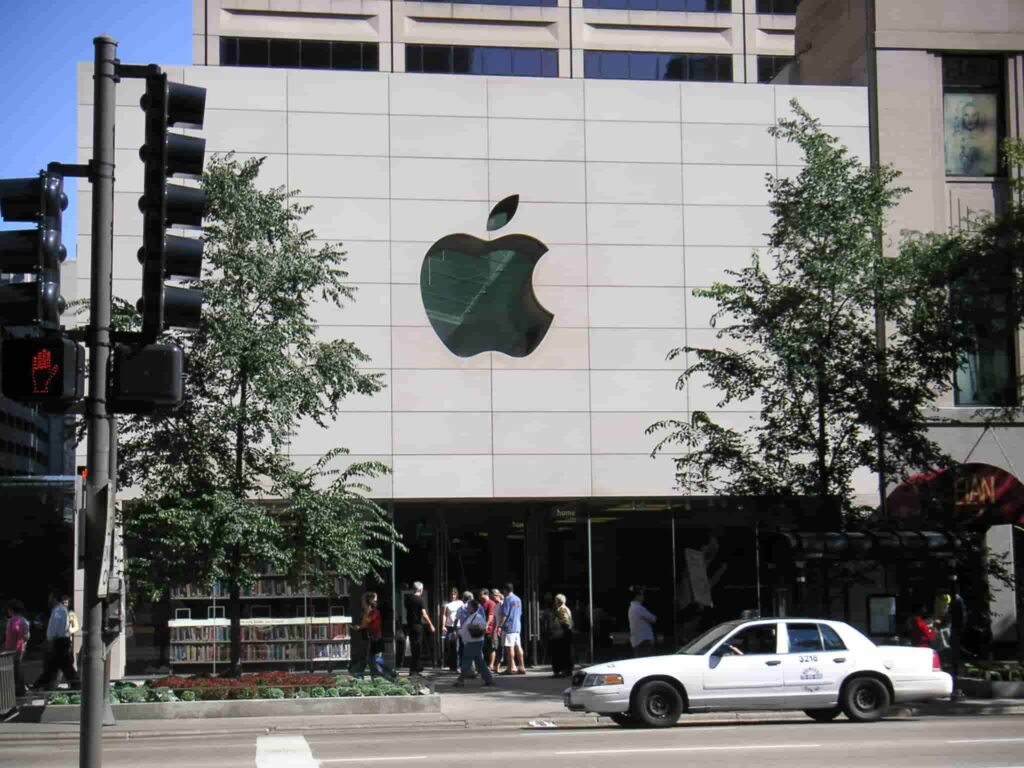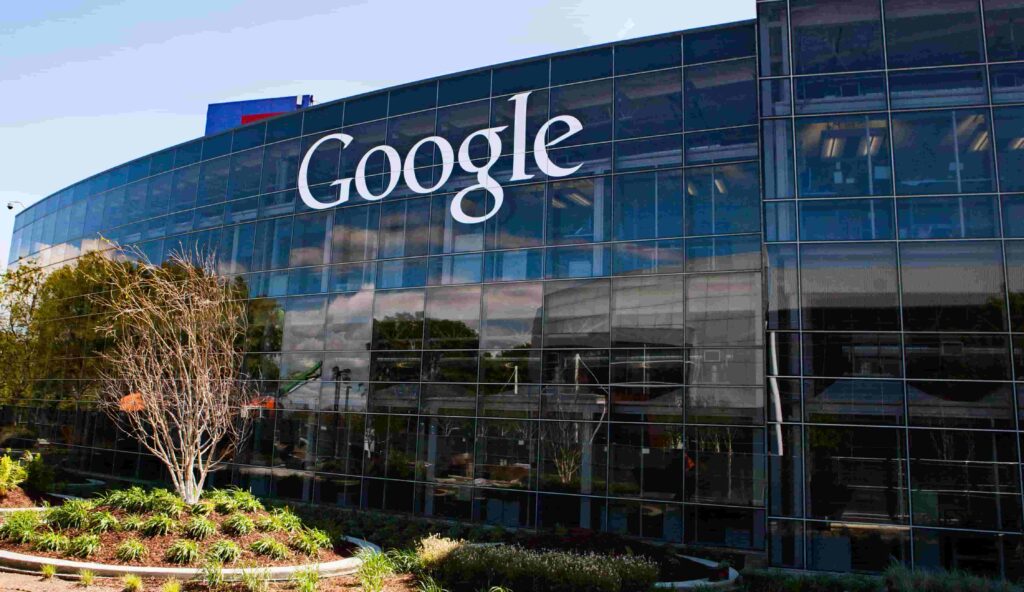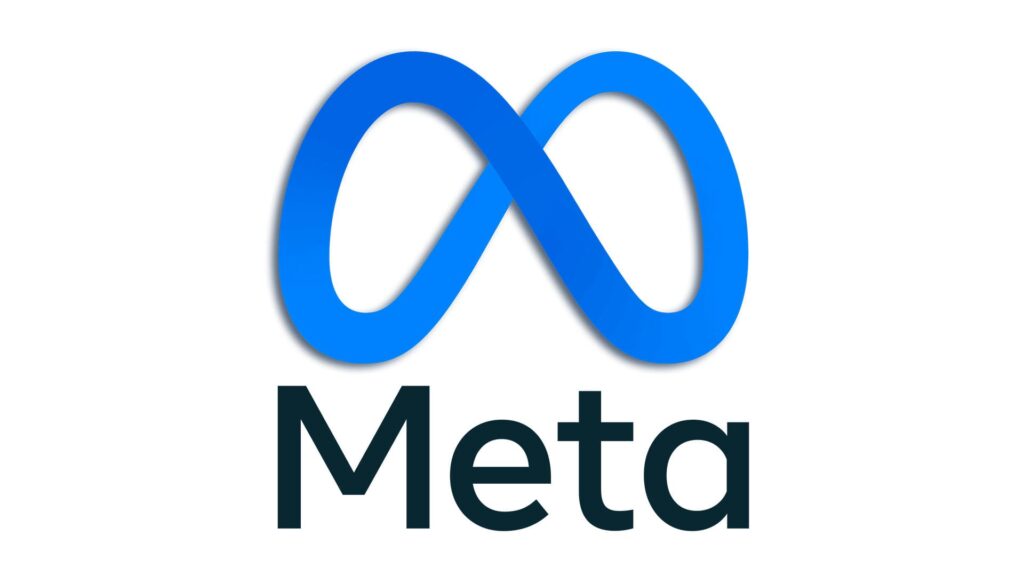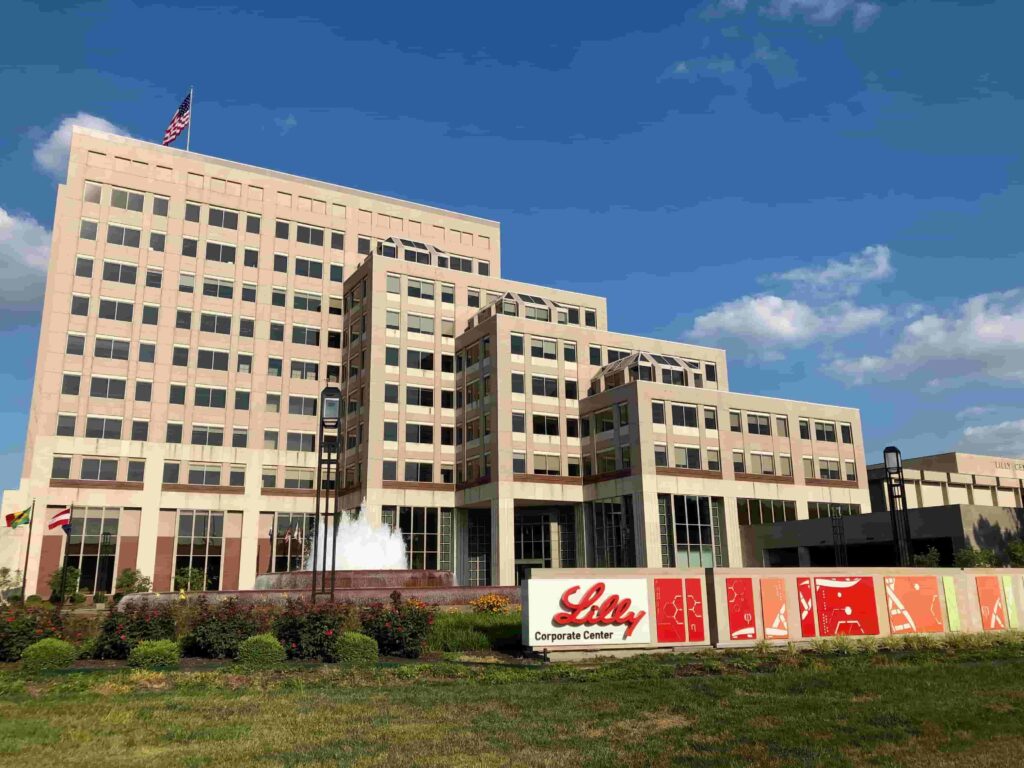The global economy is dominated by a select few companies that have managed to rise to the top through strategic business practices, innovative technologies, and sheer market prowess. As of 2024, the ten largest companies by market capitalization include industry giants from the technology, energy, and pharmaceutical sectors. The following are the top 10 companies of the world :
| Rank | Name | Market Cap | Price | Country |
| 1 | NVIDIA | $3.335 T | $135.58 | USA |
| 2 | Microsoft | $3.317 T | $446.34 | USA |
| 3 | Apple | $3.285 T | $214.29 | USA |
| 4 | Alphabet (Google) | $2.171 T | $176.45 | USA |
| 5 | Amazon | $1.902 T | $182.81 | USA |
| 6 | Saudi Aramco | $1.787 T | $7.39 | S. Arabia |
| 7 | Meta Platforms (Facebook) | $1.266 T | $499.49 | USA |
| 8 | TSMC | $931.97 B | $179.69 | Taiwan |
| 9 | Berkshire Hathaway | $880.93 B | $407.95 | USA |
| 10 | Eli Lilly | $847.24 B | $891.46 | USA |
1. NVIDIA : From Gaming Giant To AI Power House (Market Cap: $3.335 Trillion)
Business Model: Graphics Processing Units (GPUs) & AI Computing
NVIDIA’s transformation from a gaming-focused graphics card manufacturer to a leader in artificial intelligence (AI) computing has been remarkable. The AI revolution fueled demand for NVIDIA’s powerful GPUs, making them the de facto standard for AI development and machine learning. Additionally, forays into self-driving cars and cloud gaming demonstrate their commitment to emerging technologies.

Moat & Competition: NVIDIA’s competitive advantage lies in its cutting-edge GPU architecture and superior performance.The company’s GPUs are highly regarded for their performance and efficiency, making them the preferred choice for gaming, AI research, and data centers. However, rivals like Intel and AMD are pushing hard, and competition from custom chip manufacturers like China’s Sinowealth Electronics is rising, but its continuous innovation and strong market presence give it a significant edge.
Reasons for Success:
Pivoting to AI: Recognizing the AI boom, NVIDIA transitioned from solely catering to gamers to empowering the AI revolution with its GPUs.
Constant Innovation: NVIDIA consistently invests in research and development, pushing the boundaries of GPU technology and staying ahead of the curve.
Diversification: Stepping beyond gaming, NVIDIA became a leader in AI, self-driving cars, and cloud gaming, fostering future growth.
Key People:
Jensen Huang (CEO): A visionary leader who steered NVIDIA’s expansion beyond gaming GPUs and into AI and autonomous vehicles.
Colette Kress (CFO): Responsible for NVIDIA’s strong financial performance and strategic investments in AI and emerging technologies.
Future Outlook:
NVIDIA’s future is bright. Its dominance in the AI hardware space and its strategic moves into self-driving cars and cloud gaming position it for growth. However, competition from established and emerging players remains a factor to watch.
2. Microsoft: The Tech Titan Reimagined (Market Cap: $3.317 Trillion)
Business Model: Software & Cloud Computing

Microsoft has undergone a remarkable transformation under Satya Nadella. The company transitioned from a software-centric model to a cloud-first approach, with its Azure platform rivalling Amazon Web Services (AWS) for dominance. Additionally, a successful subscription model for products like Office 365 and Xbox Game Pass fosters recurring revenue and a loyal customer base.
Moat & Competition: Microsoft’s competitive advantage lies in its established ecosystem of software, hardware (Surface devices), and cloud services. This creates a switching cost for users already invested in the Microsoft environment. However, competition from AWS and Google Cloud Platform in the cloud space, and Apple and Google in the software realm, remains fierce.
Reasons for Success:
Cloud-first Strategy: Microsoft recognized the shift to cloud computing and pivoted, making Azure a game-changer in the cloud market.
Subscription Model: Transitioning to recurring revenue streams ensures financial predictability and customer loyalty.
Strategic Acquisitions: Acquisitions like LinkedIn broadened Microsoft’s reach and user base.
Key People:
Satya Nadella (CEO): Spearheaded the company’s transformation and cloud focus, leading Microsoft to success.
Amy Hood (CFO): Instrumental in driving financial discipline and strategic investments, ensuring Azure’s growth.
Future Outlook:
Microsoft is well-positioned, but needs innovation in cloud computing, AI, and gaming to maintain its lead. Exploring the intersection of these technologies with mixed reality (MR) headsets like HoloLens could be a future driver of growth.
3. Apple: The Innovation Powerhouse (Market Cap: $3.285 Trillion)
Business Model: Consumer Electronics & Services

Apple, synonymous with sleek design and cutting-edge technology, has a unique niche. Its premium brand image and loyal customer base propel its success. From iPhones to Apple Watches, Apple consistently pushes the boundaries of mobile technology. Its services like Apple Music and App Store provide additional revenue streams and lock users into its ecosystem.
Moat & Competition: Apple’s strong brand loyalty, fostered by a seamless user experience and closed ecosystem, is its biggest moat. However, competition from Chinese smartphone makers like Huawei and Xiaomi, and rivals like Samsung in the wearables segment, is a big challenge.
Reasons for Success:
Premium Brand Image: Apple has cultivated a brand synonymous with innovation, design, and exclusivity. This premium image allows them to command higher prices.
Focus on User Experience: Apple prioritizes seamless user experiences in all its products and services, fostering customer loyalty.
Closed Ecosystem: The tight integration between Apple hardware, software, and services creates a strong ecosystem that discourages users from switching to competitors.
Key People:
Tim Cook (CEO): Successfully navigated Apple after Steve Jobs’ passing, maintaining its innovative spirit and focus on user experience.
Luca Maestri (CFO): Played a key role in Apple’s financial success and strategic acquisitions, expanding Apple’s service offerings.
Future Outlook:
Apple faces challenges like competition and the need for continuous innovation. Forging into augmented reality (AR)/virtual reality (VR) technology and healthcare could be key growth drivers. Additionally, diversifying its manufacturing base beyond China to mitigate trade risks will be crucial for long-term success.
4. Alphabet (Google): The Information Powerhouse (Market Cap: $2.171 Trillion)
Business Model: Online Advertising & Search

Alphabet, the parent company of Google, remains a dominant force in the information age. Its core advertising business, fueled by search giant Google and video platform YouTube, continues to generate massive revenue. However, Alphabet has expanded its reach through ventures like self-driving cars (Waymo) and life sciences research (Verily).
Moat & Competition: Alphabet’s moat lies in its vast user base and the massive amount of data it collects. This allows for highly targeted advertising, a significant advantage. However, increasing regulation and competition from companies like Amazon and Facebook threaten its dominance.
Reasons for Success:
Advertising Dominance: Google’s search engine and YouTube are unparalleled advertising platforms, generating significant revenue.
Data-driven Innovation: Alphabet leverages its vast user data to personalize experiences and develop innovative products like self-driving cars.
Focus on Emerging Technologies: The company actively invests in future-oriented projects like self-driving cars and life sciences, positioning itself for long-term growth.
Key People:
Sundar Pichai (CEO): Responsible for expanding Google’s reach beyond search and into new technologies like self-driving cars and life sciences.
Ruth Porat (CFO): Drives Alphabet’s financial performance and oversees strategic investments, ensuring Alphabet’s financial health.
Future Outlook:
Alphabet’s dominance is likely to continue, but it faces challenges like increasing regulation and competition in the online advertising space. innovation in areas like artificial intelligence, self-driving cars, and healthcare will be key for maintaining its long-term success.
5. Amazon: The E-commerce Behemoth (Market Cap: $1.902 Trillion)
Business Model: E-commerce & Cloud Computing (AWS)

Amazon, the e-commerce giant, continues to expand its reach with an ever-growing product selection, its dominant cloud computing platform (AWS), and its recent forays into healthcare. Amazon’s Prime membership program fosters customer loyalty and generates recurring revenue.
Moat & Competition: Amazon’s competitive advantage lies in its extensive logistics network, scalability, and diversification. However, competition from Walmart and other online retailers in e-commerce, and rivals like Microsoft Azure and Google Cloud Platform in cloud computing, are significant challenges. Additionally, increasing scrutiny from regulators regarding its market dominance is an ongoing concern.
Reasons for Success:
Customer Focus: Amazon prioritizes customer experience with its vast product selection, fast delivery, and Prime membership benefits, fostering loyalty.
Innovation and Scale: Amazon constantly innovates in logistics, automation, and new product categories, making it a leader in e-commerce.
Diversification: Expanding into cloud computing and healthcare positions Amazon for future growth beyond e-commerce.
Key People:
Andy Jassy (CEO): Previously led AWS, now steers Amazon’s overall growth strategy, focusing on cloud computing and innovation.
Brian Olsavsky (CFO): Oversees Amazon’s financial performance and strategic investments, ensuring resources for growth
Future Outlook:
Amazon’s future is bright, but competition and regulatory scrutiny are potential hurdles. Innovation in logistics, cloud computing, and healthcare, coupled with navigating regulatory challenges, will be crucial for maintaining its lead. Exploring new frontiers like drone delivery and autonomous vehicles could further solidify its dominance.
6. Saudi Aramco: The Oil Giant Enduring (Market Cap: $1.787 Trillion)
Business Model: Oil & Gas Production & Refining

Saudi Aramco, the world’s largest oil and gas producer by reserves, continues to be a dominant force. Despite the growing focus on renewable energy, Aramco leverages its vast oil reserves and efficient operations to maintain its position. The company has also made strategic investments in green technologies, recognizing the need for a sustainable future.
Moat & Competition: Saudi Aramco’s competitive advantage lies in its massive hydrocarbon reserves and low production costs. However, the company faces challenges from the global shift towards renewable energy and competition from other major oil producers like Russia and the United States. Additionally, geopolitical tensions in the region pose a risk to its operations.
Reasons for Success:
Vast Oil and Gas Reserves: Saudi Aramco possesses a significant portion of the world’s proven oil reserves, ensuring a steady stream of revenue.
Operational Efficiency: The company has a reputation for efficient oil production and refining, keeping costs low and maximizing profits.
Strategic Investments: Recognizing the future of energy, Aramco invests in renewable energy and green technologies.
Key People:
Amin Nasser (CEO): Leading Aramco through the energy transition while maintaining its oil production dominance.
Khalid al-Dabbagh (CFO): Overseeing financial stability and responsible for Aramco’s diversification efforts.
Future Outlook:
Saudi Aramco’s future hinges on its ability to adapt to the global shift towards renewable energy. Diversification into green technologies and forging strategic partnerships with renewable energy companies will be crucial for its long-term success. Additionally, navigating geopolitical tensions will be essential for maintaining stability.
7. Meta Platforms (Facebook): The Social Media Giant (Market Cap: $1.266 Trillion)
Business Model: Social Media Advertising

Meta Platforms, formerly Facebook, remains a dominant force in social media. Its platforms, including Facebook, Instagram, and WhatsApp, boast a massive user base, generating significant revenue through targeted advertising. However, Meta faces challenges regarding data privacy and user trust.
Moat & Competition: Meta’s competitive advantage lies in its extensive user network across multiple platforms. However, concerns over data privacy, competition from TikTok and other social media platforms, and potential regulation pose significant threats. Additionally, the rise of alternative communication methods like messaging apps could erode its user base.
Reasons for Success:
Network Effect: Meta’s vast user base attracts advertisers, creating a network effect that strengthens its position.
Data-driven Advertising: Meta leverages user data for targeted advertising, generating significant revenue.
Mobile-first Strategy: Meta has successfully adapted to the mobile-centric online world.
Key People:
Mark Zuckerberg (CEO): Navigating Meta through data privacy concerns and fostering innovation in the social media space. He faces the challenge of regaining user trust.
David Wehner (CFO): Responsible for Meta’s financial performance and strategic investments, ensuring resources for innovation and user retention efforts.
Future Outlook:
Meta’s future hinges on regaining user trust, addressing data privacy concerns, and adapting to evolving online trends. Diversification beyond social media advertising and exploring new technologies like the metaverse could be key for long-term success. Nurturing a more responsible approach to data privacy will be crucial in regaining user trust.
8. TSMC (Taiwan Semiconductor Manufacturing Company): The Chip Giant (Market Cap: $931.97 Billion)
Business Model: Contract Chip Manufacturing

TSMC is the world’s leading contract chip manufacturer, producing chips designed by other companies like Apple, AMD, and Nvidia. TSMC’s advanced manufacturing processes and high production capacity make it a vital player in the global semiconductor industry.
Moat & Competition: Main advantage lies in its cutting-edge technology and manufacturing expertise. However, competition from chip manufacturers like Samsung and the rise of fabless chip companies (those that design but don’t manufacture chips) present challenges. Additionally, geopolitical tensions pose a risk to TSMC’s dominance, particularly regarding its dependence on Taiwan’s manufacturing infrastructure.
Reasons for Success:
Technological Leadership: TSMC consistently invests in research and development, staying at the forefront of chip manufacturing technology.
Economies of Scale: TSMC’s massive production capacity allows it to achieve cost efficiencies and economies of scale.
Focus on Partnerships: Strong partnerships with leading chip designers like Nvidia and Apple solidify TSMC’s position in the market.
Key People:
C.C. Wei (CEO): Leading TSMC through technological advancements and navigating geopolitical challenges.
Wendell Huang (CFO): Overseeing financial performance and strategic investments to maintain TSMC’s edge.
Future Outlook:
The future of TSMC is bright, but maintaining its technological leadership and navigating geopolitical risks will be crucial. innovation and strategic partnerships will be key to its long-term success. Exploring opportunities to diversify its manufacturing base beyond Taiwan will be vital to mitigate geopolitical risks.
9. Berkshire Hathaway: The Investment Powerhouse (Market Cap: $880.93 Billion)
Business Model: Insurance & Diversified Investments

Berkshire Hathaway, led by the legendary investor Warren Buffett, is a unique entity. It operates a diverse portfolio of insurance businesses and wholly-owned subsidiaries like BNSF Railway, while also holding significant investments in publicly traded companies. Buffett’s value investing philosophy has generated exceptional returns for shareholders over decades.
Moat & Competition: Berkshire Hathaway’s moat lies in its financial strength, investment expertise, and Warren Buffett’s reputation. However, replicating Buffett’s success is challenging, and the company faces competition from other large investment firms. Additionally, finding attractive investment opportunities amidst a potentially volatile market could be a hurdle.
Reasons for Success:
Value Investing: Berkshire Hathaway focuses on acquiring undervalued companies with a strong long-term outlook, generating significant returns.
Financial Strength: The company boasts a massive cash pile, allowing it to make strategic acquisitions and weather market downturns.
Warren Buffett’s Leadership: Buffett’s investment acumen and long-term perspective have propelled Berkshire Hathaway’s success. Charlie Munger , Warren Buffet’s man friday was indispensable for Berkshire Hathaway’s success.
Key People:
Warren Buffett (Chairman & CEO): The legendary investor continues to steer Berkshire Hathaway’s investment strategy.
Greg Abel & Ajit Jain (Vice-Chairmen): Positioned to take the reins in the future, ensuring Berkshire Hathaway’s investment philosophy continues.
Future Outlook:
Berkshire Hathaway’s future hinges on finding attractive investment opportunities and successfully transitioning leadership after the Buffett era. adherence to its value investing principles and diversification across various sectors will be crucial for long-term success. Identifying and nurturing the next generation of investment leaders within the company will be paramount.
10. Eli Lilly: The Pharmaceutical Powerhouse (Market Cap: $847.24 Billion)
Business Model: Pharmaceutical Research & Development

Eli Lilly is a leading pharmaceutical company, developing and commercializing innovative drugs across various therapeutic areas. Their research and development (R&D) capabilities and successful drugs like Trulicity (diabetes) and Verzenio (cancer) drive their success.
Moat & Competition: Eli Lilly’s competitive advantage lies in its strong R&D pipeline and patent protection for its drugs. However, competition from other pharmaceutical giants and the high cost of drug development pose significant challenges. Additionally, navigating the ever-evolving regulatory landscape of the pharmaceutical industry is crucial.
Reasons for Success:
Focus on Innovation: Eli Lilly invests heavily in R&D, bringing new and effective drugs to market.
Strong Product Portfolio: A lineup of successful drugs like Trulicity generates consistent revenue and market share.
Global Reach: Eli Lilly operates in various countries, ensuring a wider market for its pharmaceuticals.
Key People:
David Ricks (CEO): Leading Eli Lilly in its R&D focus and expanding its global reach.
Future Outlook:
Eli Lilly’s future rests on its ability to maintain a robust R&D pipeline and navigate the complexities of the pharmaceutical industry. focus on innovative drug development, cost management, and navigating the regulatory landscape will be crucial for long-term success. Additionally, exploring strategic partnerships and mergers and acquisitions to bolster its product portfolio could be an avenue for future growth.
In conclusion, the ten largest companies in the world as of 2024 have achieved their positions through a combination of innovative products, strategic business practices, and strong leadership. Their continued focus on growth and adaptation to changing market conditions will likely sustain their dominance in the global economy.
Frequently Asked Questions (FAQs):
Q. What are the biggest factors driving the growth of these companies?
A. The factors driving growth vary across the companies. Here’s a brief overview:
Tech Companies: Technological innovation, constant product development, and expansion into new markets are key drivers.
Oil Giant: Despite the shift towards renewable energy, Saudi Aramco’s vast oil reserves and efficient operations continue to generate significant revenue.
Chip Manufacturer: The ever-growing demand for advanced chips in various industries fuels TSMC’s growth.
Investment Firm: Berkshire Hathaway’s success hinges on its value investing philosophy and Warren Buffett’s leadership.
Pharmaceutical Company: Eli Lilly’s focus on R&D and successful drugs drive its growth.
Q. What are the biggest challenges these companies face?
A. The challenges faced by these companies are diverse:
Tech Companies: Competition, data privacy concerns, and navigating a rapidly evolving technological landscape are major challenges.
Oil Giant: The global shift towards renewable energy and geopolitical tensions pose significant risks for Saudi Aramco.
Chip Manufacturer: Competition from other chipmakers and geopolitical tensions are major concerns for TSMC.
Investment Firm: Replicating Warren Buffett’s success and finding attractive investment opportunities in a potentially volatile market are key challenges for Berkshire Hathaway.
Pharmaceutical Company: High costs of drug development, competition from other pharmaceutical companies, and navigating the regulatory environment are major hurdles for Eli Lilly.
Q. What are the potential future trends that could impact these companies?
A. Several trends could significantly impact these companies:
Tech Companies: The rise of artificial intelligence, blockchain technology, and the metaverse could reshape the tech landscape.
Oil Giants: The transition towards renewable energy sources will undoubtedly impact oil giants like Saudi Aramco.
Chip Manufacturer: The ongoing demand for advanced chips for various technologies like AI and autonomous vehicles will benefit chipmakers like TSMC.
Investment Firm: The overall health of the global economy and the performance of the stock market will significantly impact Berkshire Hathaway.
Pharmaceutical Company: Advances in personalized medicine and the focus on preventative healthcare could influence Eli Lilly’s future product development strategies.
This analysis provides a glimpse into the ten largest companies globally in 2024. Understanding their business models, competitive landscapes, and future outlooks can offer valuable insights for investors and those interested in the ever-evolving landscape of global business.
Q. What are the primary factors driving the success of these companies?
A. The primary factors include innovation, strategic investments, strong leadership, customer-centric approaches, and effective business models.
Q. How do these companies maintain their competitive advantage?
A. These companies maintain their competitive advantage through continuous innovation, efficient operations, strong brand recognition, and strategic acquisitions.
Q. What challenges do these companies face?
A. Challenges include market competition, regulatory changes, economic fluctuations, and technological disruptions.
Q. What is the future outlook for these companies?
A. The future outlook is positive, with continued growth expected through innovation, expansion into new markets, and strategic investments in emerging technologies.
Q. How important is leadership in the success of these companies?
A. Leadership is crucial, as visionary leaders drive the strategic direction, innovation, and culture of the companies, leading to sustained success.
Q. How do these companies impact the global economy?
A. These companies significantly impact the global economy by driving technological advancements, creating jobs, and contributing to economic growth through their operations and innovations.
Reference : http://www.investopedia.com





